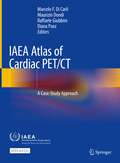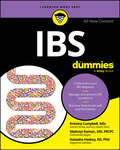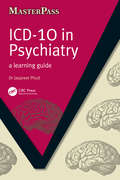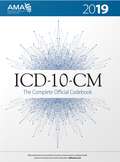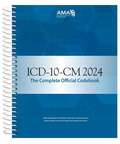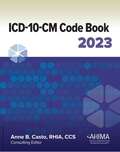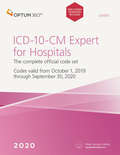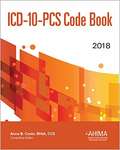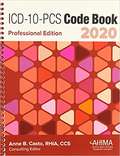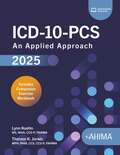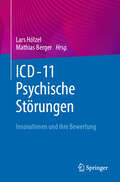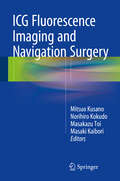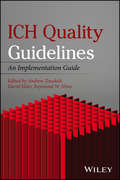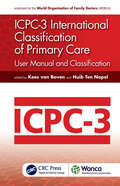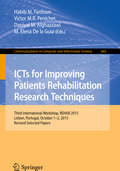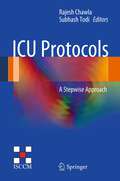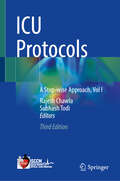- Table View
- List View
IAEA Atlas of Cardiac PET/CT: A Case-Study Approach
by Marcelo F. Di Carli Maurizio Dondi Raffaele Giubbini Diana PaezThis open access book presents a wide portfolio of examples of positron emission tomography coupled with computer tomography (PET/CT) studies in various cardiac conditions in order to provide a rationale for the implementation of this technology in an array of clinical conditions. Cardiovascular diseases are a major contributor to premature morbidity and mortality worldwide. Low- and middle-income countries (LMICs) are particularly affected by cardiovascular diseases (CVDs), with more than 75% of all CVDs deaths occurring in these countries. For this reason, target 3.4 of the United Nations (UN) Sustainable Development Goals (SDGs) agenda aims at a 30% reduction in premature mortality due to non-communicable diseases (NCDs), which include CVDs, by 2030. Among CVDs, ischemic heart disease (IHD) plays an important role and, according to the Institute for Health Metrics and Evaluation (IHME), it was responsible for 15.96% of global deaths in 2017. Between 2000 and 2017, the number of IHD deaths worldwide increased by 0.26% per year. Several imaging tools help to non-invasively diagnose, stratify risk and guide management in cardiac disease. They include nuclear cardiology techniques, using either SPECT (single photon emission computed tomography) or PET/CT. While myocardial imaging with SPECT has been fully embraced by the cardiology community and is widely available worldwide, PET/CT introduction has been slower, due not only to its higher costs, but also to the limited availability of PET/VCT scanners, mostly utilized for oncological applications. This book is an invaluable tool for nuclear medicine physicians, cardiologists and radiologists.
IBS For Dummies
by Kristina Campbell Maitreyi Raman Natasha HaskeyGet trustworthy answers to all your questions about irritable bowel syndrome IBS For Dummies is a much-needed resource that covers all aspects of this common gastrointestinal disorder, from a basic understanding of how the digestive tract works to managing the difficult and often unpredictable symptoms that come with the condition. This essential guide also gives those with IBS and IBS-like symptoms key tips on how to adapt their lifestyle and live life to the fullest. Packed with up-to-date scientific information, IBS For Dummies takes you through the different subtypes of IBS and their symptoms, covers treatment options, and provides helpful tips in a clear and approachable way. The compassionate Dummies approach makes coping with IBS easier, so you won't be held back by your symptoms. Discover the role of the gut microbiome and the gut-brain axis in IBS Learn how you can get an IBS diagnosis and find the treatment that works for you Find IBS-friendly recipes, current research findings, and new management options If you or someone you love has been diagnosed with IBS—or struggles with IBS symptoms without a diagnosis—this book will help you uncover new avenues for relief. Healthcare professionals looking to educate patients will also love this approachable reference.
IBS: A Self-Help Guide to Feeling Better
by Wendy GreenIn this easy-to-follow book, Wendy Green explains how food intolerances, gut infections, bacterial imbalance, stress and hormones contribute to IBS, and offers practical advice and a holistic approach to help you deal with the symptoms. From simple dietary and lifestyle changes to DIY complementary therapies, find out 50 things you can do today to help you copewith IBS, including:Identify your IBS triggers and learn how to manage themChoose beneficial foods and supplementsManage stress and relax to reduce flare-upsLearn which types of exercise can help to relieve symptomsFind helpful organisations and products
IBS: Control irritable bowel syndrome for life
by Sara Lewis Tracy ParkerWith so many people worldwide affected by irritable bowel syndrome, it is important that we all know the details behind recognising and curing this affliction. IBS: Food, Facts and Recipes offers expert, easy-to-follow information about exactly what IBS is and its symptoms and causes. This practical book also provides detailed advice on what to eat and what to avoid with 50 delicious, nutritious recipes that make eating right easy. Includes constructive ideas for simple lifestyle changes that will help to ease symptoms and answers to all the questions that you might be too embarrassed to ask.
IBS: Control irritable bowel syndrome for life
by Sara Lewis Tracy ParkerWith so many people worldwide affected by irritable bowel syndrome, it is important that we all know the details behind recognising and curing this affliction. IBS: Food, Facts and Recipes offers expert, easy-to-follow information about exactly what IBS is and its symptoms and causes. This practical book also provides detailed advice on what to eat and what to avoid with 50 delicious, nutritious recipes that make eating right easy. Includes constructive ideas for simple lifestyle changes that will help to ease symptoms and answers to all the questions that you might be too embarrassed to ask.
ICD 10 in Psychiatry: A Learning Guide
by Jaspreet PhullCore to psychiatry is the practice of assessment, diagnosis and management. All three elements are subject to identifying the correct diagnosis and all three influence the clinical management of individuals with a mental disorder. This easy-to-comprehend, list-based book presents mnemonics to aid immediate recall of the International Classification of Diseases and Related Health Problems (ICD 10) for prompt diagnosis in psychiatry. Used in conjunction with other ICD 10 guides, this remarkable resource is ideal for memorising the myriad complexities of the ICD 10 for anyone with an interest in learning about diagnostic coding in psychiatry including medical students, psychiatry trainees and mental health professionals. During my time revising for my psychiatry postgraduate examinations, I found learning of ICD 10 for diagnosis particularly testing, especially given the depth and complexity of the criteria. I found aide memoires in the form of mnemonics particularly helpful to support my learning of the subject, allowing for much more efficient recall. From the Preface
ICD-10-CM 2019 The Complete Official Codebook
by American Medical AssociationICD-10-CM 2019 The Complete Official Codebook provides the entire updated code set for diagnostic coding, organized to make the challenge of accurate coding easier. This codebook is the cornerstone for establishing medical necessity, determining coverage and ensuring appropriate reimbursement. Each of the 21 chapters in the Tabular List of Diseases and Injuries is organized to provide quick and simple navigation to facilitate accurate coding. The book also contains supplementary appendixes including a coding tutorial, pharmacology listings, a list of valid three-character codes and additional information on Z-codes for long-term drug use and Z-codes that can only be used as a principal diagnosis.
ICD-10-CM 2024: The Complete Official Codebook (ICD-10-CM the Complete Official Codebook)
by American Medical AssociationICD-10-CM 2024: The Complete Official Codebook provides the entire updated code set for diagnostic coding, organized to make the challenge of accurate coding easier. This codebook is the cornerstone for establishing medical necessity, correct documentation, determining coverage and ensuring appropriate reimbursement. Each of the 22 chapters in the Tabular List of Diseases and Injuries is organized to provide quick and simple navigation to facilitate accurate coding. The book also contains supplementary appendixes including a coding tutorial, pharmacology listings, a list of valid three-character codes and additional information on Z-codes for long-term drug use and Z-codes that can only be used as a principal diagnosis. Official 2024 coding guidelines are included in this codebook.
ICD-10-CM Expert for Hospitals: The Complete Official Code Set
by Optum360ICD-10-CM Expert for Hospitals: The Complete Official Code Set is your definitive coding resource, combining the work of the National Center for Health Statistics (NCHS), Centers for Medicare and Medicaid Services (CMS), American Hospital Association (AHA), and Optum360 experts to provide the information you need for coding accuracy. <p><p> The International Classification of Diseases, 10th Revision, Clinical Modification (ICD-10-CM), is an adaptation of ICD-10, copyrighted by the World Health Organization (WHO). The development and maintenance of this clinical modification (CM) is the responsibility of the NCHS as authorized by WHO. Any new concepts added to ICD-10-CM are based on an established update process through the collaboration of WHO's Update and Revision Committee and the ICD-10-CM Coordination and Maintenance Committee. In addition to the ICD-10-CM classification, other official government source information has been included in this manual.
ICD-10-CM Professional For Physicians With Guidelines 2021
by Optum360The ICD-10-CM 2021 Professional for Physicians, uses our hallmark features and format, making the challenge of accurate diagnosis coding easier. Developed specifically to meet the needs of physicians, the Optum360 codebook contains the complete ICD-10-CM code set, which is the cornerstone for establishing medical necessity, determining coverage, and ensuring appropriate reimbursement. Symbols in the tabular section identify codes associated with CMS quality payment program (QPP) measures and CMS hierarchical condition categories (HCC) used in risk adjustment (RA) coding. <P><P> This version will contain the updated 2021 Coding Guidelines within the book.
ICD-10-PCS An Applied Approach 2018: International Classification of Diseases Tenth Revision Procedure Coding System
by Lynn Kuehn Therese M. JorwicInternational Classification of Diseases Tenth Revision Procedure Coding System (ICD-10-PCS): An Applied Approach
ICD-10-PCS Code Book 2018
by Anne B. Casto<p>The American Health Information Management Association (AHIMA) proudly introduces the ICD-10-PCS Code Book, 2018 to help you execute the International Classification of Diseases, Tenth Revision, Procedure Coding System. <p>Key Features <p> <li>Completely updated for all 2018 codes and coding guidelines <li>Includes color-coded tabs to align with section colors <li>Coding guidelines included in the Introduction and before each section for quick reference <li>Color-coded sections help make navigation and code selection easier <li>Medical-Surgical and OB sections include Code Listings <li>American Hospital Association (AHA) Coding Clinic references included throughout the Tabular <li>Anatomical art included in each body system section of the Medical and Surgical Tables and Code Listings <li>Identification of procedures that impact Medicare Code Editor (MCE) version 34 edits <li>Identification of procedures that impact MS-DRG version 34 pathways and edits <li>Identification of procedures that are included in Medicare's Hospital-Acquired Conditions (HAC) program <li>Appendices include Root Operation Definitions, Type and Qualifier Definitions, Medical and Surgical Approach Definitions, Body Part Key, Device Key and Aggregation Table </li> </p>
ICD-10-PCS Code Book, Professional Edition 2020
by Anne CastoICD-10-PCS 2020: The Complete Official Codebook contains the complete ICD-10-PCS code set and supplementary appendixes required for reporting inpatient procedures. This illustrated codebook presents the code set in 17 sections of tables arranged by general procedure type. Tables within the extensive Medical and Surgical section are additionally sectioned out by body system, indicated by color-coded page borders. ICD-10-PCS contains classifications for procedures, devices and technologies.
ICD-10-PCS, An Applied Approach 2025
by Lynn Kuehn Therese JorwicThis comprehensive text is devoted to learning and mastering the process of building codes in ICD-10-PCS. All current coding professionals and students in academic programs must become and remain proficient in using this system for inpatient procedures. ICD-10-PCS: An Applied Approach enhances learning through in-depth discussion of the code building process. Code Building Exercises guide the reader through the process of evaluating an operative report by providing thought-provoking questions along with complete in-text answers and rationales. In addition, ICD-10-PCS: An Applied Approach is enriched with annotated reports, decision trees, short-statement coding, and capstone exercises to reinforce chapter concepts.
ICD-11 – Psychische Störungen: Innovationen und ihre Bewertung
by Mathias Berger Lars HölzelDas Buch ist eine Einführung in und ein Überblick über das komplexe Gebilde der ICD-11 für psychische und psychosomatische Erkrankungen. Die Herausgeber und Autoren stellen in dem kompakten und gut lesbaren Werk die ICD-11 insbesondere im Hinblick auf die Veränderungen zu ICD-10 dar. Besonderen Wert legen sie auf eine Bewertung der Neuerungen aus wissenschaftlicher und klinischer Sicht sowie deren Implikationen für die zukünftige klinische Arbeit.
ICG Fluorescence Imaging and Navigation Surgery
by Masakazu Toi Norihiro Kokudo Mitsuo Kusano Masaki KaiboriThis book presents a comprehensive overview and outlook for the future of indocyanine green[w1] (ICG) fluorescence navigation surgery, which is attracting clinical interest as a safe and less invasive procedure not only in detecting cerebral vessels, coronary arteries, and biliary trees, but also in identifying sentinel lymph nodes in cancer. The book starts with the characteristics of ICG and photodynamic cameras/endoscopes, followed by detailed descriptions of the applications of ICG fluorescence imaging in various areas such as ocular surgery, neurosurgery, cardiovascular surgery, and plastic surgery. It also covers identifying sentinel lymph nodes in breast cancer as well as cancers of the gastrointestinal tract, and provides valuable information for hepato-biliary-pancreatic surgeons, such as identifying tattooing of liver segments and bile leakage. Written entirely by experts in their respective areas, ICG Fluorescence Imaging and Navigation Surgery offers an essential resource for surgeons operating on cancers and vascular disorders in the brain and cardiovascular systems and in plastic surgery.
ICH Quality Guidelines: An Implementation Guide
by Andrew Teasdale David Elder Raymond W. NimsExamining the implications and practical implementation of multi-disciplinary International Conference on Harmonization (ICH) topics, this book gives an integrated view of how the guidelines inform drug development strategic planning and decision-making.• Addresses a consistent need for interpretation, training, and implementation examples of ICH guidelines via case studies• Offers a primary reference point for practitioners addressing the dual challenge of interpretation and practical implementation of ICH guidelines• Uses case studies to help readers understand and apply ICH guidelines• Provides valuable insights into guidelines development, with chapters by authors involved in generating or with experience implementing the guidelines• Includes coverage of stability testing, analytical method validation, impurities, biotechnology drugs and products, and good manufacturing practice (GMP)
ICPC-3 International Classification of Primary Care: User Manual and Classification (WONCA Family Medicine)
by Kees Van BovenThis third edition of the International Classification of Primary Care (ICPC-3) is indispensible for anyone wishing to use the international classification system for classification of morbidity data in a primary care setting. Distilling the many standards that are applied internationally in primary & community care and public health to offer a telescopic view, the classification has been completely rewritten to reflect the continued shift in the health paradigm of primary care and public health towards the person rather than the disease or provider. The content of ICPC-3 remains closely ‘linked’ to relevant related international classifications. The ICPC-3 also contributes to the United Nations’ Sustainable Development Goals, specifically to Goal 3 and its target of ensuring healthy lives and promoting well-being for all at all ages.
ICTMI 2017: Proceedings of the International Conference on Translational Medicine and Imaging
by Parasuraman Padmanabhan Balázs Gulyás A. Lenin Fred T. R. Kumar Sundramurthy KumarThis book highlights the latest research presented at the International Conference on Translational Medicine and Imaging (ICTMI) 2017. This event brought together the world’s leading scientists, engineers and clinicians from a wide range of disciplines in the field of medical imaging. Bioimaging has continued to evolve across a wide spectrum of applications from diagnostics and personalized therapy to the mechanistic understanding of biological processes, and as a result there is ever-increasing demand for more robust methods and their integration with clinical and molecular data. This book presents a number of these methods.
ICTs for Improving Patients Rehabilitation Research Techniques
by Habib M. Fardoun Victor M R. Penichet Daniyal M. AlghazzawiThisbook constitutes the thoroughly refereed proceedings of the secondInternational Workshop on ICTs for Improving Patients Rehabilitation ResearchTechniques, REHAB 2014, held in Oldenburg, Germany, in May 2014. The 26 revised full paperspresented were carefully reviewed and selected from 69 submissions. The papersfocus on virtual and enhanced environments, covering topics such as motorrehabilitation; neuroimaging in rehabilitation; virtual rehabilitation;clinical assessment; cognitive rehabilitation; communication and language;ambisonics and audio environments; haptic devices; sensory impairment; medicalsystems; input devices; sensors and actuators; multi-user systems for userinteraction; computer access; virtual humans; balance, posture and mobility;communications aids; tools for architectural/CAD design; product design,testing and prototyping; training tools for rehabilitation; augmented realityapplications; human factors; rehabilitation robotics.
ICTs for Improving Patients Rehabilitation Research Techniques
by Victor M. R. Penichet Habib M. Fardoun Daniyal M. Alghazzawi M. Elena De la Guia4th Workshop on ICTs for Improving Patients Rehabilitation Research Techniques Oct 13, 2016-Oct 14, 2016 Lisbon, Portugal. You can view more information about this proceeding and all of ACM#65533;s other published conference proceedings from the ACM Digital Library: http://www. acm. org/dl.
ICU Protocols
by Subhash Todi Rajesh ChawlaThe book describes step-wise management of clinical emergencies seen every day in Intensive care units (ICUs. As a practical guide, clinicians can refer to it on a day-to-day basis during their work hours, or while in transit to update their knowledge. Targeted readers are intensivists, critical care specialists, and residents involved in the care of patients admitted in ICUs. This handbook covers an array of specialities such as cardiology, pulmonology, gastroenterology, neurology, nephrology, traumatology, and toxicology. This monograph provides point-of-care treatment guidance and will serve as a ready-reckoner for physicians to quickly learn the management steps in a methodical manner.
ICU Protocols: A Step-wise Approach, Vol I
by Subhash Todi Rajesh ChawlaThe second edition of this highly successful book includes up-to-date notes on the step-wise management of clinical emergencies encountered in everyday intensive care units (ICU). Each thoroughly revised chapter provides concise information for point-of-care treatment, making it a practical guide clinicians can refer to on a daily basis at work or while traveling, or just to expand their knowledge. Volume 1 of ICU Protocols covers topics in pulmonology, cardiology, neurology, gastroenterology, nephrology and infectious diseases. The endocrine and metobolic systems, oncology, trauma, toxicology, envenomation and thermodysregulation, obstetrics, and perioperative care are covered in the second volume of ICU Protocols. This two-volume book is a must-read for intensivists, critical care specialists, junior trainees and residents working in ICUs. It is also relevant as course material for workshops on critical care, and essential for all hospital-based libraries. “This book provides junior trainees with an introduction to the management of problems common to the critical care unit.” David J Dries, Doody’s Book Reviews, March, 2013, for the first edition of ICU Protocols.
ICU Protocols: A Step-wise Approach, Vol I
by Subhash Todi Rajesh ChawlaThe third edition of this highly successful book includes up-to-date notes on the stepwise management of clinical emergencies encountered in everyday intensive care units (ICU). Each thoroughly revised chapter provides concise information for point-of-care treatment, making it a practical guide clinicians can refer to daily at work while traveling, or just to expand their knowledge. Volume 1 of ICU Protocols covers topics in pulmonology, cardiology, neurology, gastroenterology, nephrology, and infectious diseases. The endocrine and metabolic systems, oncology, trauma, toxicology, envenomation and thermoregulation, obstetrics, and perioperative care are covered in the second volume of ICU Protocols. This two-volume book is a must-read for intensivists, critical care specialists, junior trainees, and residents working in ICUs. It is also relevant as course material for workshops on critical care, and essential for all hospital-based libraries. &“This book provides junior trainees with an introduction to the management of problems common to the critical care unit.&” David J Dries, Doody&’s Book Reviews, March 2013, for the first edition of ICU Protocols.
